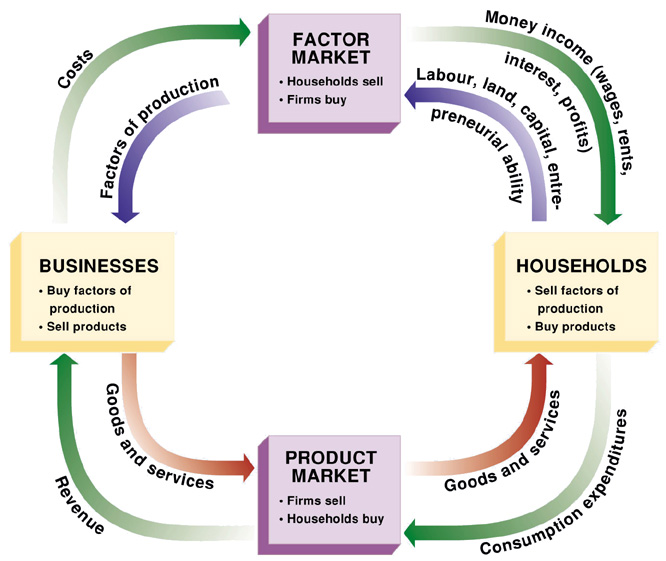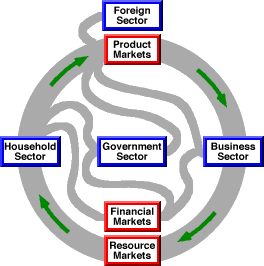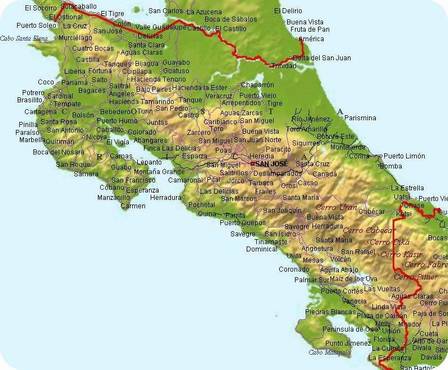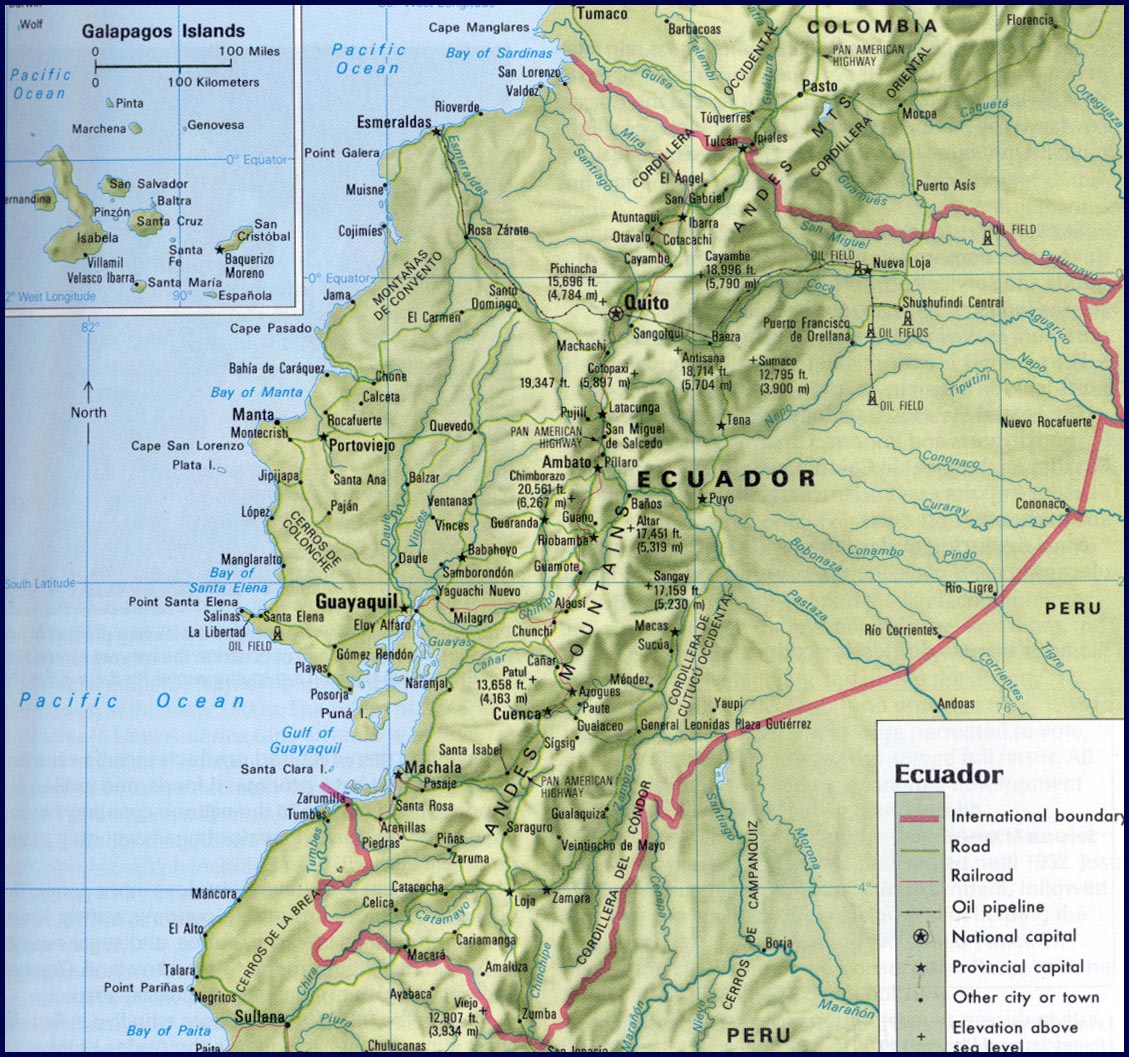Internal
Links
Top
|
|
Outline on the
Economy & the Environment
|
|
External
Links
|
| |
- Project: The Neoclassicist
& Liberal Positions on the Environment |
Link
|
| |
INTRO & SUMMARY
The property right's solution to the envl problems, & most soc
probs is to privatize
Prop rights school advocates establishing an envl mkt
Estimating the cost of producing/maintaining the env gives an est of
the supply
Estimating the value of using / 'harvesting' the env gives an est of
the demand
To achieve optimum envl protection, taxes, subsidies, & controls
are used
The strength of the envl mkt is that it works, imperfectly
The problems w/ envl mkts, taxes, & subsidies, & controls are
economic & ethical
Surveys are inadequate at determining supply & demand
Mkt pricing of envl goods will price some people out
An envl mkt will have the same mkt failures which plague regular mkts
Govt regulation is another methods to correct mkt failures in the env
Govt regulation, like envl mkts, is imperfect
Institutional envl econ builds on neo & liberal econ to acct for
monetary & ethical aspects of the env |
|
| |
Most envl analysis is done w/ neoclassical economics |
|
| |
Neoclassical econ attempts to acct for mkt failure |
|
| |
Yet, little is done to account for non monetary assets, benefits, costs,
or depreciation |
|
| |
THE PROPERTY RIGHT SCHOOL'S SOLUTION TO ENVL PROBLEMS, & MOST
SOC PROBS, IS TO PRIVATIZE |
|
| |
The property rights school (PRS) is aka the public choice theory |
|
| |
For the PRS, the best way to deal with envl problems is to eliminate
all public property |
|
| |
The optimal level of envl protection will be achieved by private bargains
btwn actors in free mkt |
|
| |
The PRS & the neoclassical approaches hold that envl protection
can be achieved by the mkt |
|
| |
The PRS & the neoclassicists believe that the mkt must be supplemented
w/ taxes, subsidies, controls, tradable permits etc. |
|
| |
Neoclassicists advocate regulated mkts to deal w/ mkt failures such
as externalities, public goods, instability, etc. |
|
| |
The neoclassicists aim to turn the env into a commodity, just like
any other |
|
| |
For the neoclassicists, the price of a tree would include all of its
values, commercial & aesthetic |
|
| |
The neoclassicists see that the env is frequently undervalued as is
anything w/ spillover benefits |
|
| |
The env can often be used free of charge & therefore tends to get
over used, & therefore degraded |
|
| |
THE PROP RIGHTS SCHOOL ADVOCATES ESTABLISHING AN ENVL MKT |
|
| |
After the 1st step of privatization is completed by dividing the env
into goods & services & eliminating public prop, the next step
is to estb an envl mkt |
|
| |
Prices, which are recognized as only an approx of value, are determined
the supply & demand of the mkt: if supply is low & demand is high,
then prices will be hi, etc. |
|
| |
Since it is not practical to provide ownership for air, oceans, species,
etc., determining the cost, to est the supply curve, & determining
the value, to est the demand curve, must be done theoretically |
|
| |
ESTIMATING THE COST OF PRODUCING / MAINTAINING THE ENV GIVES AN
EST OF THE SUPPLY |
|
| |
The values of non divisible goods should include include normal costs
as well as all spillover costs |
|
| |
The value of the env is based on maintenance, opportunity costs, &
spillover costs |
|
| |
Valuing the cost of a good can be seen in the example where the cost
of car is based on maintenance & what can bought instead of the car,
& the cost to neighbors' health in terms of pollution, or cost to my
neighbor who lost a son in the Gulf War, etc. |
|
| |
Values must be determined at various levels of env use / protection
to come up w/ an accurate supply curve |
|
| |
ESTIMATING THE VALUE OF USING / 'HARVESTING' THE ENV GIVES AN EST
OF THE DEMAND |
|
| |
Demand is determined by estbing the willingness to pay |
|
| |
Hedonic pricing is the practice where prices & demand are compared
to real life similar goods: e.g. Nat Park prices are compared to
RV park prices |
|
| |
Contingent valuation is the practice where prices & demand are
determined by surveying people: how much would you pay? |
|
| |
Economists construct a demand curve by seeing how many times a person
would use the env at different costs: if the Nat Park was free, how
often would you visit? $5? $10? $20? $50?
$100? $150? |
|
| |
Economists determine costs at various levels of env use / 'harvest'
& come up w/ an accurate demand curve |
|
| |
Economists use supply & demand curves to set prices |
|
|
|
TO ACHIEVE OPTIMUM ENVL PROTECTION, TAXES, SUBSIDIES, &
CONTROLS ARE USED |
|
| |
Because of mkt failures, to achieve the optimum, mkt based envl protection,
taxes, subsides & controls must supplement the econ system |
|
| |
Besides the mkt, another econ method can either substitute for the
envl mkt or totally replace it |
|
| |
Some economists, though this is moving away from neoclassical econ
to liberal econ, advocate the use of taxes & subsidies to shape econ: |
|
| |
Taxes & subsidies now affect the gen econ |
|
| |
Taxes on producers decreases supply while taxes on consumers decrease
demand |
|
| |
Subsidies on producers increase supply while subsides on consumers
increase demand |
|
|
|
One function of the early gas tax was to use that money to subsidize
farming which had the effect of increasing farm supply, & w/ demand
staying constant, prices go down |
|
| |
An increase in a gas or energy tax has been proposed by some envlists
to subsidize envl practices such as mass transit |
|
| |
Today, taxes & subsidies are used in many ways, including sin taxes
for tech subsidies, property taxes for small biz loans, water use taxes
for water treatment plant subsidies, etc. |
|
|
|
Envlists have proposed using 'green taxes' for solar subsidies, carbon
taxes for nuclear power subsidies, gas taxes to subsidize mass transit,
etc. |
|
|
|
The principle of the liberal envlists is to use tax envlly damaging
mkts to reduce demand, & then use that money to subsidize envlly friendly
mkts to increase supply |
|
|
|
THE STRENGTH OF THE ENVL MKT IS THAT IT WORKS, IMPERFECTLY |
|
| |
Envl mkts would achieve a manageable level of protection |
|
| |
The mkt is the best compromiser of all the values, needs, & wants
that people have in relation to a basket of goods such as the env |
|
| |
Envl mkts, advertising, competition, bargains, & other aspects
of envl economics can bolster the case for the preservation of the env |
|
| |
Many agree that an envl mkt is better than no regs, no controls, i.e.
a free mkt w/ no envl protection |
|
| |
THE PROBLEMS W/ ENVL MKTS, TAXES, SUBSIDIES, & CONTROLS ARE
ECONOMIC & ETHICAL |
|
| |
The transactions concerning the env today exhibit mkt failure, so neoclassicists
want to create a replacement mkt |
|
| |
For the critics of the neoclassic view, the env is not a commodity,
& beginning w/ this false assumption flaws the entire project |
|
| |
There are also tech problems w/ the envl mkt including that the env
is not divisible |
|
| |
Another tech problem w/ the envl mkt is that the env is not owned,
is not a private good |
|
| |
Everyone should have access to water, air, wildlife, parks, etc. |
|
| |
Species & env protection is a moral question, not a mkt question |
|
| |
The location of the actor in the env should be as a steward, not an
owner |
|
| |
SURVEYS ARE INADEQUATE AT DETERMINING SUPPLY & DEMAND |
|
| |
Because, historically, there is no base level of activity in the envl
mkt, the neoclassicists rely on surveys to determine supply costs &
demand values |
|
| |
The problem w/ surveying people about the mkt is that: |
|
| |
a. protest grps will not participate in surveys |
|
| |
b. surveys have already found that the willingness to
pay bids vary widely |
|
| |
c. people are not sure about what they think about the
env |
|
| |
While we may be able to use surveys for valuing access to Nat Parks,
it is not clear that we can value air, water, ocean, cars, heat, elec,
wood, etc. |
|
| |
Liberals find that surveys do not determine costs & prices because
historically what people say they will pay in a survey is different that
what they actually do |
|
| |
Another complication in the envl mkt is that in relation to the envl
people decry a loss more than they care about a gain |
|
| |
Surveys also have the flaw that there are no individually expressed
preferences |
|
| |
We make econ choices in relationship to other choices as when we are
shopping & buy a basket full of goods |
|
| |
We do not make decisions w/ perfect info, but extremely limited info |
|
| |
It is nearly impossible to est costs & prices & only the real
world can do this |
|
| |
But estimating envl costs & prices could be phased in in some cases |
|
|
|
MKT PRICING OF ENVL GOODS WILL PRICE SOME PEOPLE OUT |
|
| |
The distribution of resources is an extremely important problem in
relation to the env, but it is not a question neoclassic economics addresses |
|
| |
Even is the env mkt could be made to work, like all mkts it is only
concerned w/ individual preferences & wants, & not needs or questions
of distribution: who can afford $75 Nat Park visits? |
|
| |
Given the current system of subsidies, taxes & controls related
to the env, such a mkt system would be problematic at best |
|
|
|
Sagoff holds that the econ cannot manage the env because the env is
in the moral sphere, not the monetary sphere, while others would maintain
it is both |
|
|
|
In addition to humans other species are excluded from consideration
in the env |
|
|
|
Human rights are often forgotten in the mkt as we see by the number
of people out of work & hungry |
|
| |
AN ENVL MKT WILL HAVE THE SAME MKT FAILURES WHICH PLAGUE REGULAR
MKTS |
|
| |
The mkt cannot account for the needs & wants of future generations |
|
| |
The landlord - tenant problem is problematic in the neoclassic mkt
& even worse in relation to the env |
|
| |
In the regular mkt, landlords pay capital investment costs & tenants
pay operating costs |
|
| |
In the regular mkt, both landlords & tenants will tend to forego
these costs unless they have long term reasons not to |
|
| |
Landlords & tenants will only pay their costs when value of bldg
is going up & intend to stay as tenant for long term, respectively,
& because this is not always the situation, landlord tenant relationships
are flawed in the regular mkt |
|
| |
Landlord - tenant relationships operate similarly in the regular mkt
& the envl mkt |
|
| |
With the long term nature of the env, landlords do not register the
value of, e.g., forest land as increasing after it is logged; landlords
do not register the value of adding insulation to their apartment bldg |
|
| |
Landlords operate as tenants who are not going to stay |
|
| |
Landlord will not insulate unless property is increasing in value,
& it benefits tenants & they are able to charge tenants for that
benefit |
|
| |
The commons dilemma remains: if I exploit the env, I benefit
but everyone else loses; if I don't exploit, I lose & everyone else
wins |
|
| |
GOVT REGULATION IS ANOTHER METHOD TO CORRECT MKT FAILURES IN THE
ENV |
|
| |
For liberals opposed to the neoclassic econ agenda, envl
goals should be set by political debate |
|
| |
Rather than using neoclassical methods of cost & price surveys,
estimation of cost & price, etc., liberals advocate a political debate
& govtl action to set taxes, subsidies, controls, & implement other
policies to enhance envl responsibility |
|
| |
For envl mkt controls to work, there needs to be a base level of performance
& the env does not even approach that level, so we have little ability
to est the costs & prices |
|
| |
In place of envl mkt, liberals advocate non envl controls such as zoning
laws, health & safety, etc. |
|
| |
In place of envl mkt, liberals advocate envl controls such as catalytic
converters, smoke stack scrubbers, sewage plants, reclamation, etc. |
|
| |
GOVT REGULATION, LIKE ENVL MKTS, IS IMPERFECT |
|
|
|
Public sector failure, like mkt failure, makes operation of govt reg
of the envl problematic at best, & dysfunctional at worst |
|
| |
See Also: The Pitfalls of Democracy |
|
|
|
The pitfalls of democracy, aka public sector failure, includes the |
|
|
|
1. the inequitable power of special interests |
|
| |
There are special interests competing on just the envl side of the
debate as to whether species, water, pollution, air, etc. is the most imp |
|
|
|
2. fact that if benefits are not clear in the public sector,
they will not be recognized |
|
| |
People easily recognize the value of logging jobs, but not the value
of a forest |
|
|
|
3. fact that if costs are hidden in the public sector,
they will not be recognized |
|
| |
People monetarize the cost of building an indl plant, but to not recognize
the long term impact of the mercury pollution it emits |
|
|
|
4. non selectivity, i.e. the inability of people to select
the exact type of product they want or the basket full of products they
want |
|
| |
Because the env has so many aspects, people prefer different mixes
of it, more than all the possible combinations of 42 flavors of ice cream |
|
| |
5. unclear goals, i.e. that setting any policy is problematic
because constituents may have conflicting or divergent goals |
|
| |
Because of all the possible selections of the env, & because there
is conflict among envlists as well as btwn envlists & other actors,
i.e. indlists, reclists, the public, the media, etc. for the political
actors, the goals are not clear |
|
|
|
6. inefficiency, i.e. the fact that the govt sector, (&
the mkts) can be very inefficient in providing promised goods & services |
|
| |
The govt is accused of being inefficient, but other complex orgs have
this problem too, i.e. the airlines, the fin mkts, telephone cos, ins cos, |
|
|
|
7. imperfect instits, i.e. the fact that the govt sector,
(& the mkts) have problems w/ corruption |
|
| |
The govt is accused of being corrupt, but other complex orgs have this
problem too, i.e. Enron, World Com, Microsoft, Wall Str, etc. |
|
|
|
8. the fallacy of limited decisions, i.e. people readily
perceive that govt limits choice, but they are less likely to recognize
that they also expand choice |
|
|
|
People look at what they want from the env, & often cannot see,
or refuse to see alternatives such as building a coal fired power plant
vs. all the alternatives which are available including conservation, wind,
solar, geothermal, etc. |
|
|
|
INSTITUTIONAL ENVL ECON BUILDS ON NEO & LIBERAL ECON TO ACCT
FOR MONETARY & ETHICAL ASPECT OF THE ENV |
|
|
|
a. Institutional envl economists (IEEs) advocate the design
mkt valuation procedures so they capture both monetary & moral aspects |
|
|
|
In addition to surveys, IEEs advocate the use of focus grps |
|
|
|
For IEEs, we must view people as both citizens & consumers |
|
|
|
b. IEEs advocate revamping instits so that public decisions
are more able to represent a democratic choice |
|
| |
Increasing public participation is a complex problem that requires
innovation & a long term view |
|
| |
Public participation might be increased through mkting the advantages
of participation, lessening secrecy in govt, lessening the impact of money
in politics, increasing the power of public meetings, & much more |
|
|
|
c. IEEs advocate moving beyond neoclassical econ to see
how people operate in the mkt as tempered by social, cultural, psych, &
ethical factors |
|
| |
Moving beyond the mkt means addressing the problem of accting for nonmonetarized
needs & wants |
|
| |
It is not clear that nonmonetarized needs & wants can be accted
for until all monetarized needs & wants are accted for because a hungry
person appreciates food more than art |
|
|
|
d. IEEs advocate accting for how tastes, needs,
wants, & demands are formed to reduce 'commercially created demand' |
|
| |
The cost of a bottle of soda pop is mostly in its advertising &
IEEs contend this is a waste of resources |
|
|
|
e. IEEs advocate measuring the standard of living based
not only on income & GDP but also on quality of life & even classic
economists agree |
|
|





